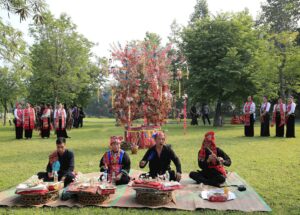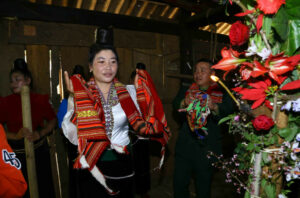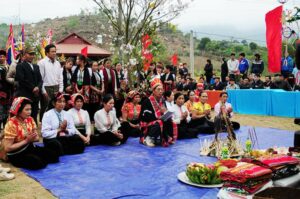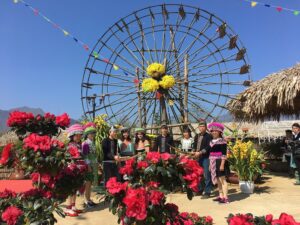Hoa Ban Festival: Preserving The Heart And Soul Of Thai Ethnic Traditions
Hoa Ban Flower Festival, also known as the Xen Muong Festival, is celebrated by the Thai ethnic community in several regions of the Northwest of Vietnam. The festival occurs annually around February in the lunar calendar, coinciding with the blossoming season of the Ban flowers, when the mountainous Northwest region is blanketed with pristine white petals. This festival embodies the local people’s earnest wishes for a prosperous and harmonious life, abundant harvests, favorable weather, and familial happiness.

Historical and Cultural Significance
Hoa Ban Flower Festival has a long-standing tradition passed down through generations. It reflects the deep respect and gratitude of the community towards the deities who are believed to have created and shaped the world. During the festival, people pray for national peace, prosperity, good weather, bountiful harvests, and happy families.
According to legend, Hoa Ban flower story represents a tragic yet profound love tale deeply embedded in the Thai ethnic culture of the Northwest. Once upon a time, there was a beautiful Thai girl named Ban who fell in love with a sincere but poor young man. Forbidden by her family from marrying her true love, she was forced to wed a wealthy suitor. Heartbroken, she fled into the forest in search of her beloved but couldn’t find him. Exhausted and despairing, she collapsed near a rock, where a white flower sprang up from the place she fell. This flower was named Ban flower, symbolizing the steadfastness and purity of a Thai girl’s love. From then on, Ban flowers have become an indispensable part of the spiritual and cultural life of the Northwest region’s ethnic groups.
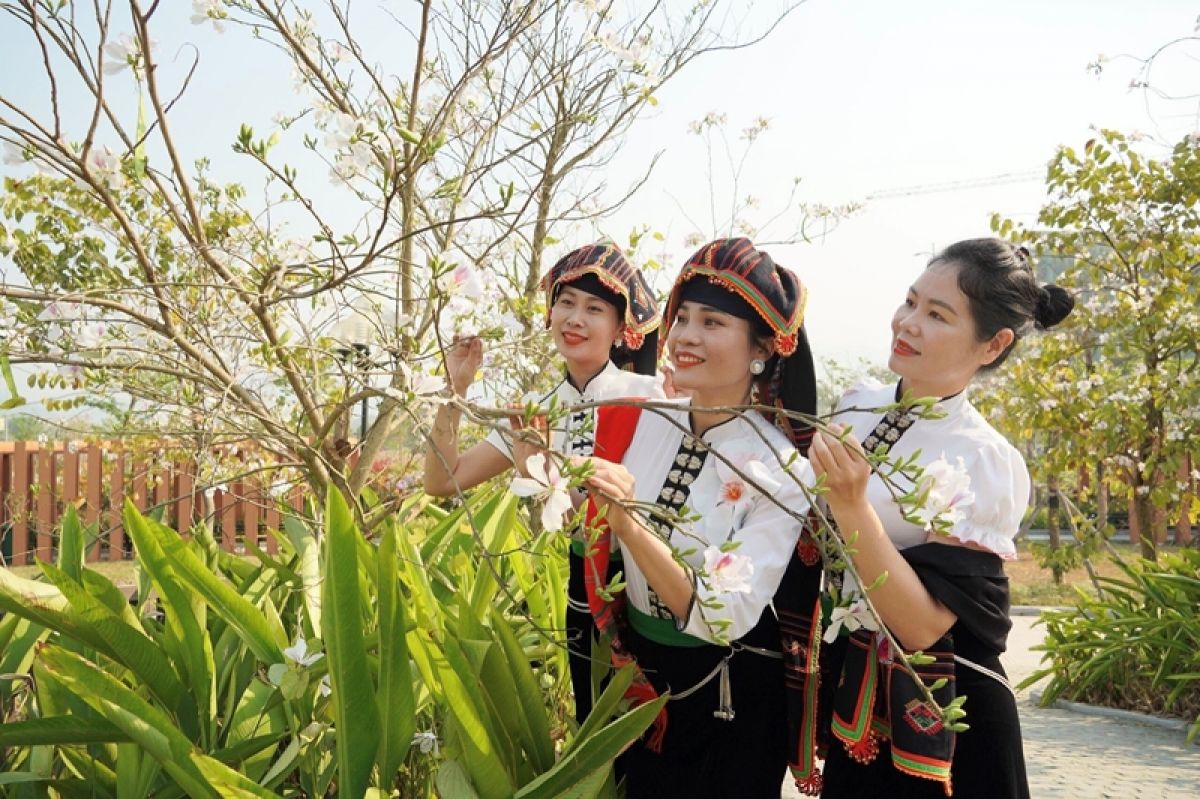
Each spring, when the Ban flowers bloom once again, they serve as a poignant remembrance of pure and steadfast love, quietly showcasing their beauty in the Northwest landscape while recalling past happiness. Therefore, every spring, the Thai community holds Hoa Ban Flower Festival (Xen Muong Festival) to commemorate the significance of romantic love and to pray for auspiciousness in life.
Spiritual and Religious Practices
Hoa Ban Flower Festival is a vital spiritual practice, preserved through many generations and holding significant meaning in the spiritual and religious lives of the Thai ethnic group. The annual festival expresses their devotion to “Then” – the highest deity according to the Thai people’s beliefs. They also honor “Nang Ban” (Lady Ban), the embodiment of purity and unwavering fidelity. Additionally, people pray to the spirits of heaven, villages, mountains, and rivers, seeking blessings for favorable weather, flourishing vegetation, abundant fruits, happiness for couples, and a peaceful, prosperous life for everyone.
Festival Activities
Ritual Ceremony (Le)
To begin Hoa Ban Flower Festival in Muong Lo, the Thai people gather to offer sacrifices at Tham Le cave. Offerings include a pig, several branches of Ban flowers, a bottle of wine, two bowls of uncooked rice, two bowls of cooked rice, incense sticks, and betel leaves and areca nuts. A shaman conducts the ceremony, reciting prayers to the cave and forest gods, seeking blessings of prosperity and abundance for the community.

Festival Celebration (Hoi)
After the ceremonial rituals, the festival moves into its festive phase, characterized by lively, joyous participation from the local community. Young men and women enthusiastically engage in playful competitions and unique performances. Amid cheers, laughter, and the sounds of traditional flutes (pi), reed pipes (khen), drums, and gongs, the atmosphere becomes vibrantly festive. Young men play reed pipes while young women, shyly yet gracefully, perform the “Tham Le” dance – specifically choreographed for the flower-picking occasion.
At this time, young men compete to climb the tallest Ban trees to pick flowers, dropping them down as gifts to the young women they admire. Sometimes, multiple young men climb simultaneously, while the girls below prepare their small baskets (“op”) to catch the flowers. A young man intentionally drops flowers to the girl he likes, and in turn, the girl eagerly catches the flowers from the boy she admires. Thus, couples discover one another and form relationships.

As Hoa Ban Flower Festival concludes, couples temporarily say goodbye, preparing to return to their fields to start a new farming season, as springtime in the Northwest also marks the beginning of agricultural activities.
Challenges and Preservation Efforts
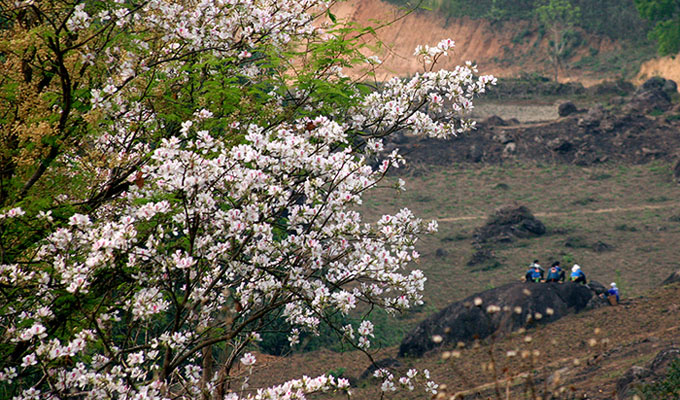
Nowadays, with rapid modernization, many traditional cultural practices of ethnic minorities have faded. As life becomes more modern, many people leave their hometowns for city employment, leading to fewer opportunities to celebrate traditional festivals. Typically, only older generations retain deep knowledge of their ethnic traditions, while younger generations show decreasing interest and understanding. Therefore, preserving and promoting these traditional values of the Northwest mountainous region requires conscious efforts from future generations.
